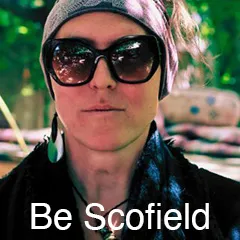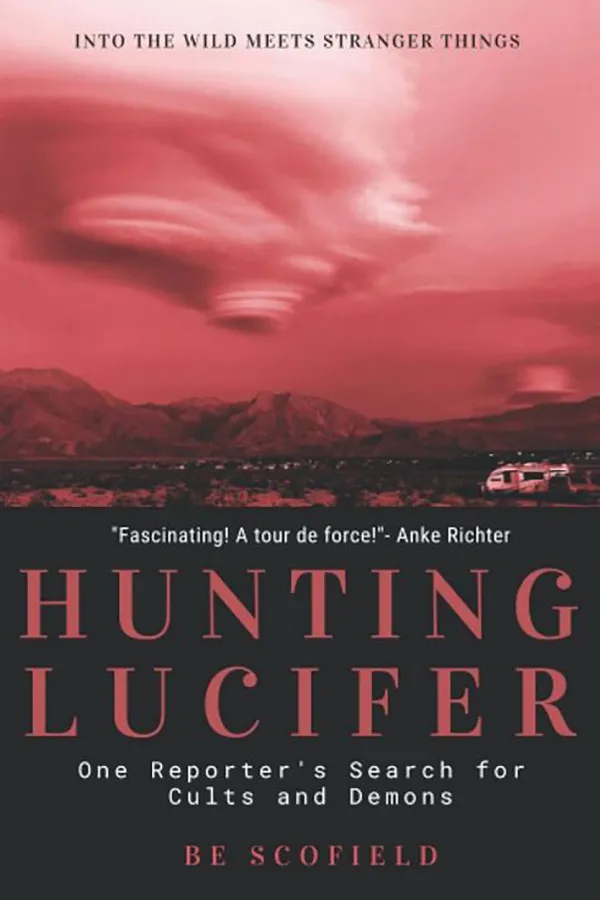
The American “journalist” Be Scofield is a new kind of anti-cultist. Her primary sources are revelations from angels, extraterrestrials, Tarot cards, and the Akashic records.
In this series of articles, Rosita Šorytė explores the emergence of a new type of anti-cult activism, which she refers to as “New Age anti-cultism.” Unlike traditional anti-cult movements that oppose “cults” in the name of secular humanism or mainstream religion, this movement criticizes “cultic” beliefs rooted in a confusing mix of astrology, energy theories, and popular esotericism.
Rosita Šorytė, member of FOB’ Scientific Committee, joined in 1992 the Ministry of Foreign Affairs of Lithuania, and worked for 25 years as a diplomat, inter alia at the UNESCO in Paris and the United Nations in New York. In 2011, she served as the representative of the Lithuanian Chairmanship of the OSCE (Organization for Security and Cooperation in Europe) at the Office for Democratic Institutions and Human Rights (Warsaw). In 2012-2013, she chaired the European Union Working Group on Humanitarian Aid on behalf of the Lithuanian pro tempore presidency of the European Union. She takes a special interest in religious liberty and on refugees escaping their countries due to religious persecution, and is co-founder and President of ORLIR, the International Observatory of Religious Liberty of Refugees. She is also the author of several articles on religious liberty and religion-based humanitarian initiatives.
AROPL and the Rise of New Age Anti-Cultism 2. The Making of Be Scofield
Article 2 of 5. Read article 1, article 3, article 4 and article 5
by Rosita Šorytė — In this series, I explore the emergence of a new type of anti-cult activism, which I refer to as “New Age anti-cultism.” Unlike traditional anti-cult movements that oppose “cults” in the name of secular humanism or mainstream religion, this movement criticizes “cultic” beliefs rooted in a confusing mix of astrology, energy theories, and popular esotericism.
My first example is Be Scofield, whose legal name may still be Robert James Scofield. She is a 45-year-old American transgender individual and a self-proclaimed “cult hunter.” In April 2025, she published the article that sparked the British campaign against the Ahmadi Religion of Peace and Light (AROPL).
Following her 2018 release of a comprehensive anti-cult exposé targeting Dutch spiritual teacher Bentinho Massaro, Scofield’s critics, including her victims and their supporters, have responded to her articles by pointing out her disregard for facts and use of inaccurate quotes and references. While some have commented lightheartedly about her belief in astrology—an unusual trait for someone in the anti-cult movement—no one has taken the time to analyze her ideology and motivations thoroughly. A significant reason for this oversight is the tendency to rely solely on online sources. Scofield provides much more detailed information about herself in printed materials that she does not share online.
She reports that her journey as a “cult hunter” began in 2017 in Asheville, North Carolina. She was having lunch and felt overwhelmed by despair and suicidal thoughts. She was broke, traumatized by past experiences of abuse, and had experienced a “soul death.” Additionally, as a transgender person, she struggled with dysphoria and faced medical barriers that prevented her from continuing the estrogen therapy necessary to align her physical appearance with her perceived female identity (Be Scofield, “Hunting Lucifer: One Reporter’s Search for Cults and Demons,” N.p.: The Author, 2022, p. 10; all references to page numbers in this article without other attributions are to this book).

Be Scofield’s book “Hunting Lucifer”
While she was seriously considering whether it was not better “not to be here [in this world] anymore,” a mysterious woman appeared who persuaded her not “to leave before you’ve completed your soul’s purpose” (p. 3). In retrospect, she realized the woman might have been an angel or a benevolent extraterrestrial.
A journey begins where the same patterns recur. First, Scofield receives unique information from five different sources:
- Astrology. An astrologer, in particular, advises her on the location she should visit every year on her birthday, where she awaits further revelations.
- Higher Dimensional Messages. She receives “downloads” from a higher dimension, provided by both human psychics and angelic messengers who appear and disappear.
- Tarot Cards. The tarot cards she uses for divination offer additional insights.
- Akashic Records. She connects with a psychic who can access the Akashic Records, which are believed to be an archive of all past, present, and future events. Madame Helena Blavatsky (1831–1891), one of the co-founders of the Theosophical Society, popularized this concept.
- Extraterrestrial Contacts. Gradually, she becomes aware that extraterrestrials from a “mothership” also watch her and provide information (pp. 320, 474).
I do not consider supernatural experiences and revelations a subject of ridicule—although Scofield does when they occur in groups she disapproves of. Only, information coming from these sources should be qualified for what it is. Scofield sometimes seems surprised that law enforcement does not accept her mystical experiences as evidence.

AI elaboration of New Age posters on the “Akashic records”
I believe that individuals who experience psychotic episodes, whether due to gender dysphoria or other reasons, deserve help and compassion. However, it becomes problematic when they assert that their experiences uniquely qualify them to identify “brainwashing” or psychosis-inducing techniques within spiritual movements. Suffering from a heart condition does not make one a cardiologist. Should they testify in court, the mental stability of these individuals could become an issue. However, this does not seem to concern the media that utilize them as “cult experts.”
When her mystical sources guide her to a specific location, Scofield realizes it is the site of a spiritual community or a place where she can gain insights about a religious group. This revelation is not entirely surprising, given that thousands of such movements exist. Additionally, her astrologer directs Scofield to well-known hubs of spiritual activity, including Sedona, Arizona; Hawaii; Orcas Island; and Crestone, Colorado.
When she arrives in a new location, Scofield receives messages about a cosmic battle between light and darkness and realizes that a dark, “Luciferian” cult is operating in the area. Her mission is to eliminate this cult. However, there is an additional issue with Scofield’s “downloads” from the spiritual realm; they consistently have a dark nature. Although she claims to be a “level two certified” Reiki master (p. 347; the details of her certification remain unclear), dark presences manifest when she administers Reiki to others. Most Reiki masters would interpret this as a sign that something is wrong. Furthermore, very few spiritual teachers would support the notion that angels and other beings of light would command someone to seek out and destroy spiritual groups they oppose.

Bentinho Massaro. From Facebook.
Scofield receives assistance from equally mysterious but non-mystical sources. After her first article, against Bentinho Massaro, “an email changed everything… someone wrote saying they wanted to support me in reporting on cults. They offered to give me a fixed income of several thousand dollars per month” (p. 70).
This situation lasted only a few months, but she later received similar assistance. The identities of these generous supporters were not specified, nor was it clear for what exactly they funded her. It is possible that this was related to the fact that, at one point, Scofield felt compelled to criticize scholars of new religious movements. She labeled Eileen Barker as the “mother of all cult apologists,” referred to Gordon Melton as a “pioneering cult apologist scholar,” described Susan Palmer as having “a disturbing fascination with dangerous cults,” and also targeted Rebecca Moore, Catherine Wessinger, and Massimo Introvigne. This occurred years before any of these scholars had criticized her or were even aware of her existence.
Source: Bitter Winter





